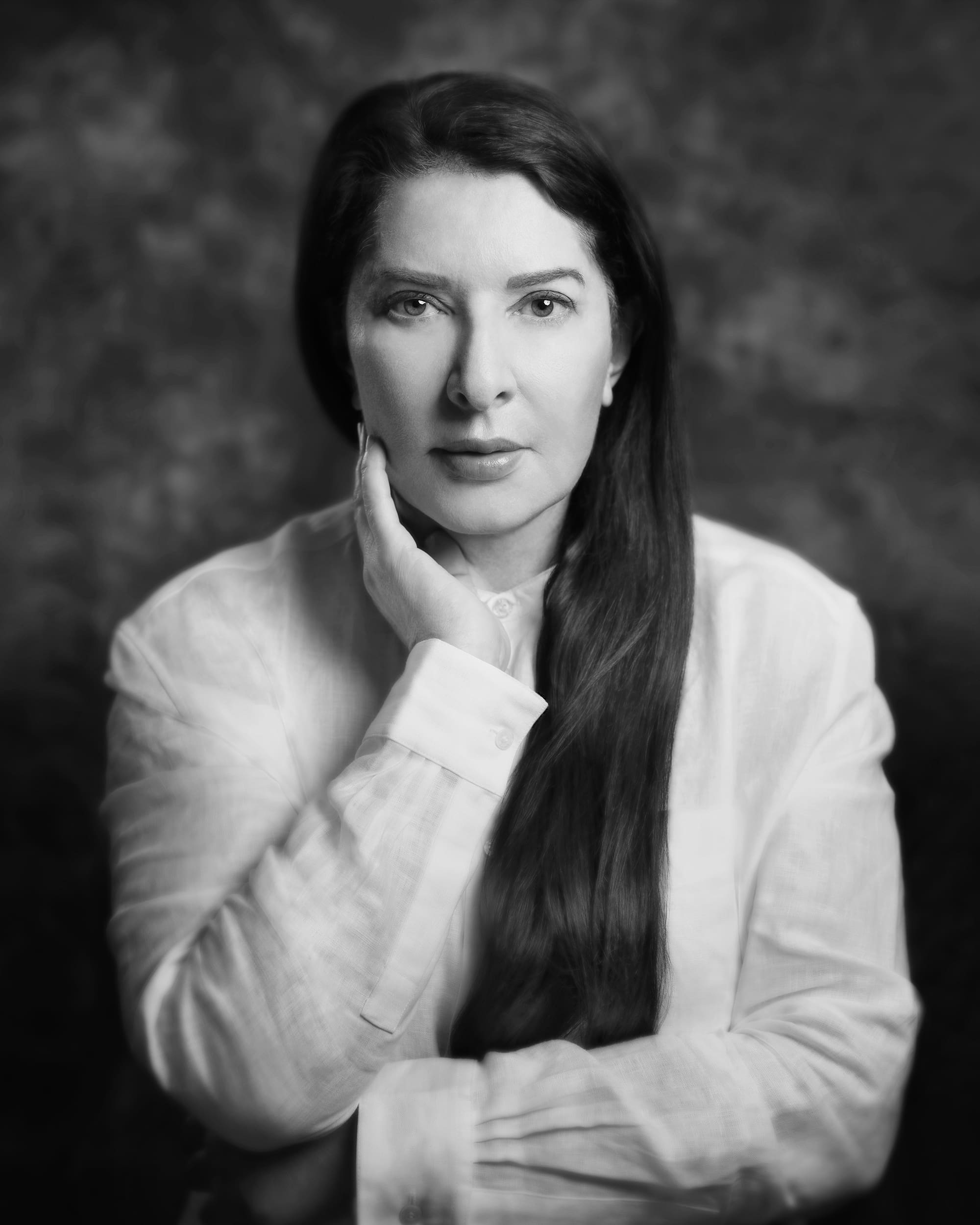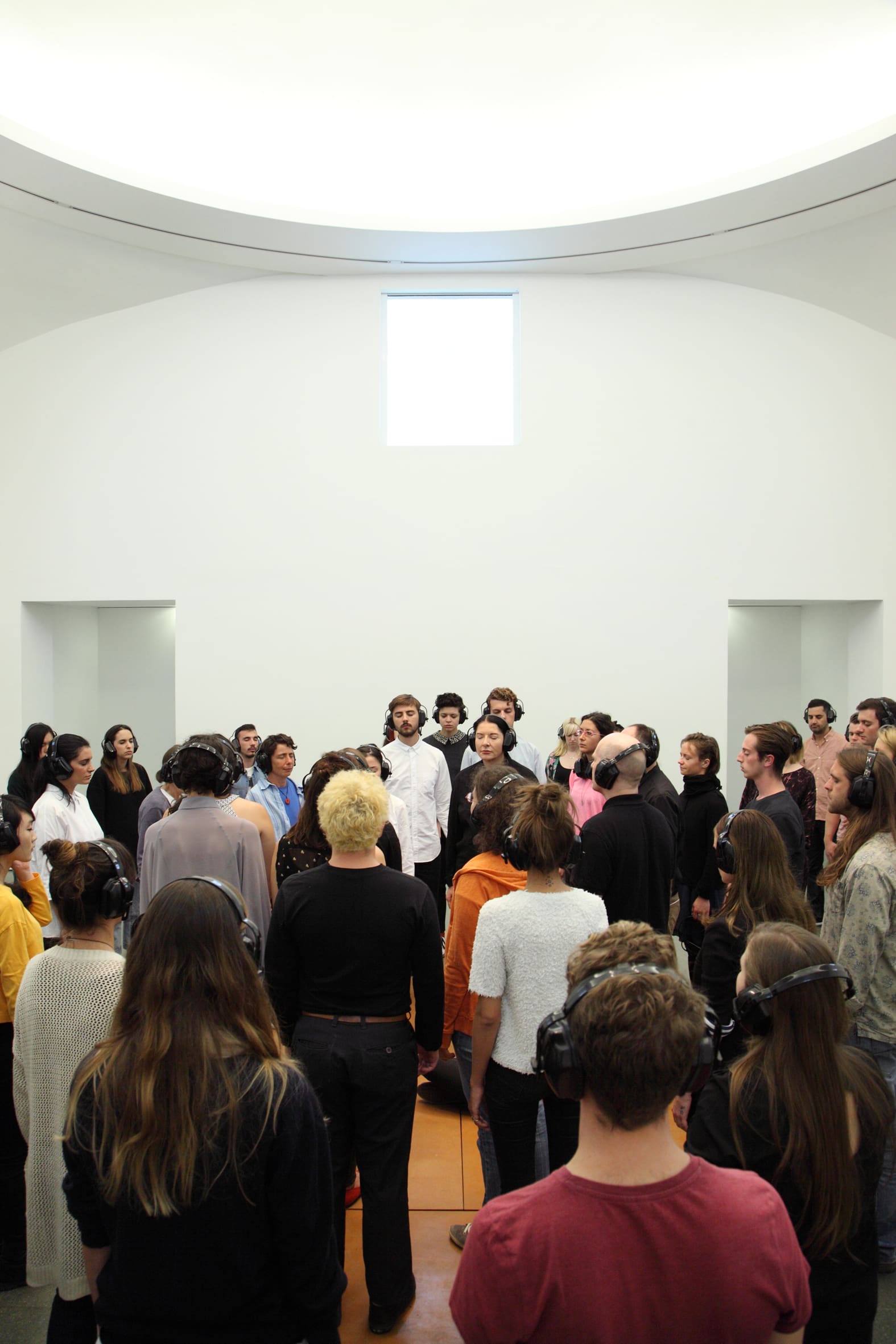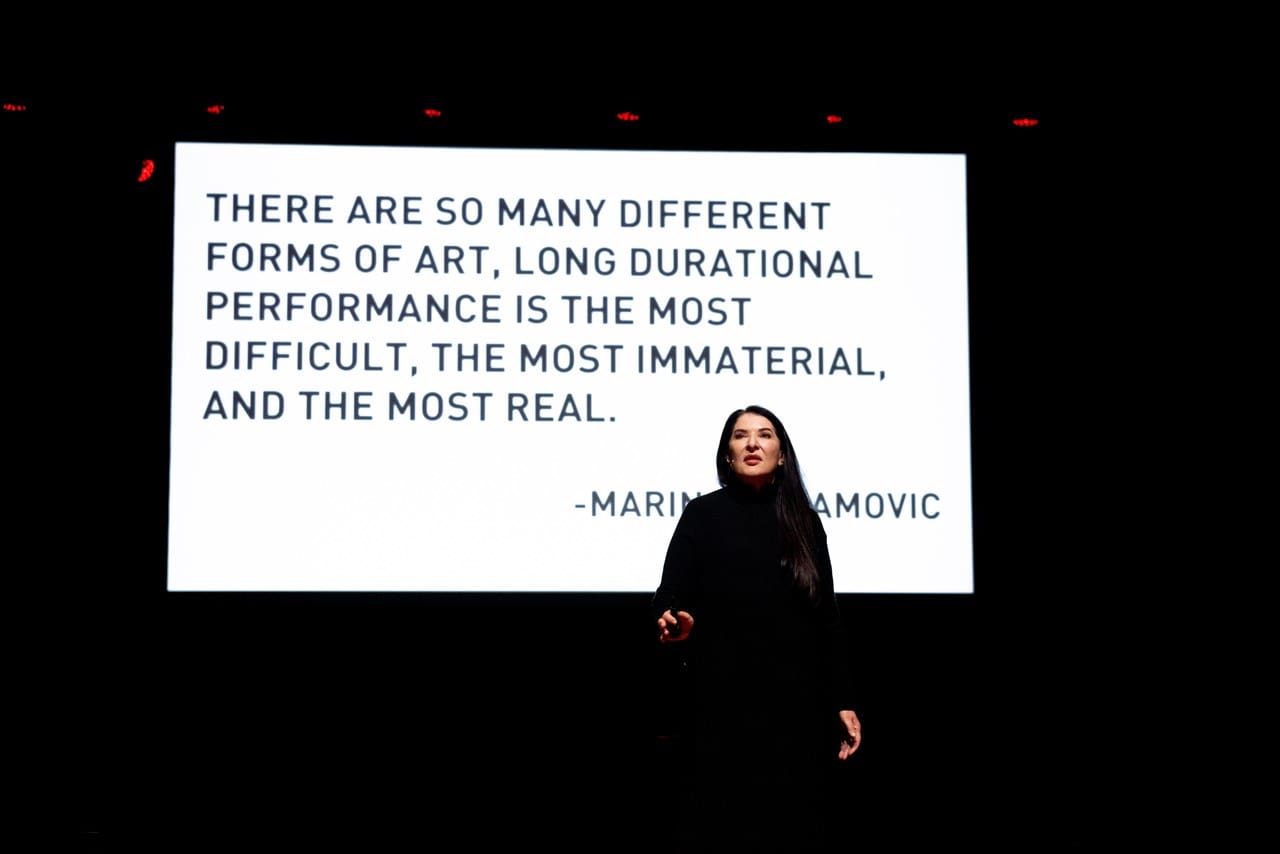
Making Space at the Table
NAP Contemporary’s group show, The Elephant Table, platforms six artists and voices—creating chaos, connection and conversation.
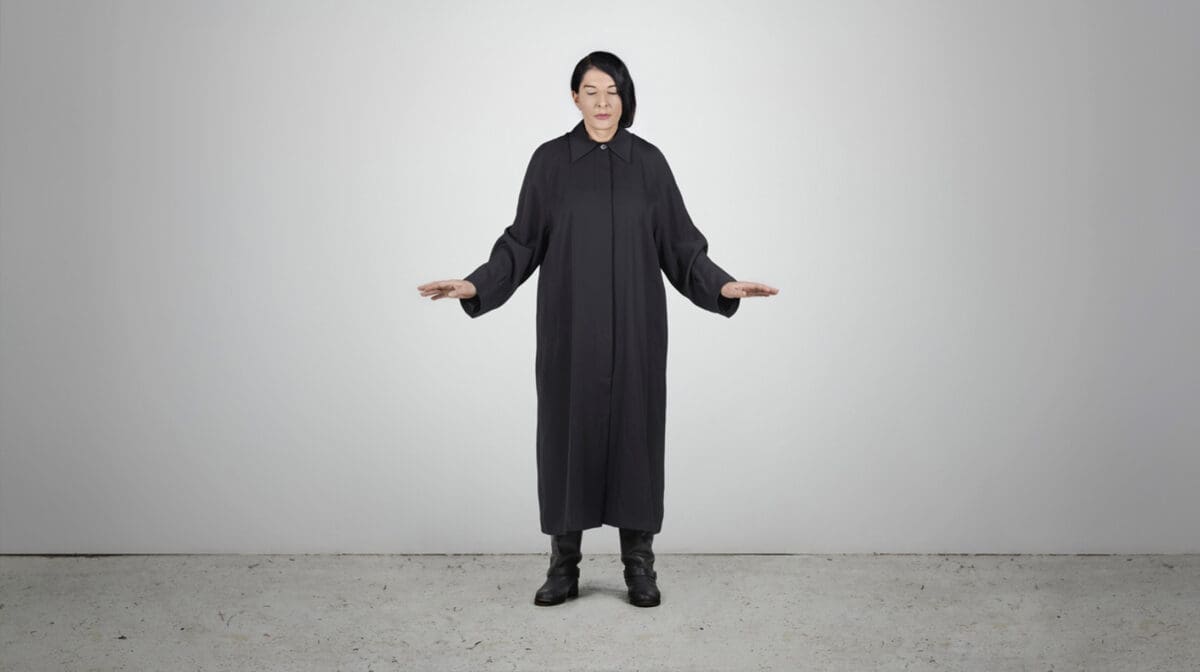

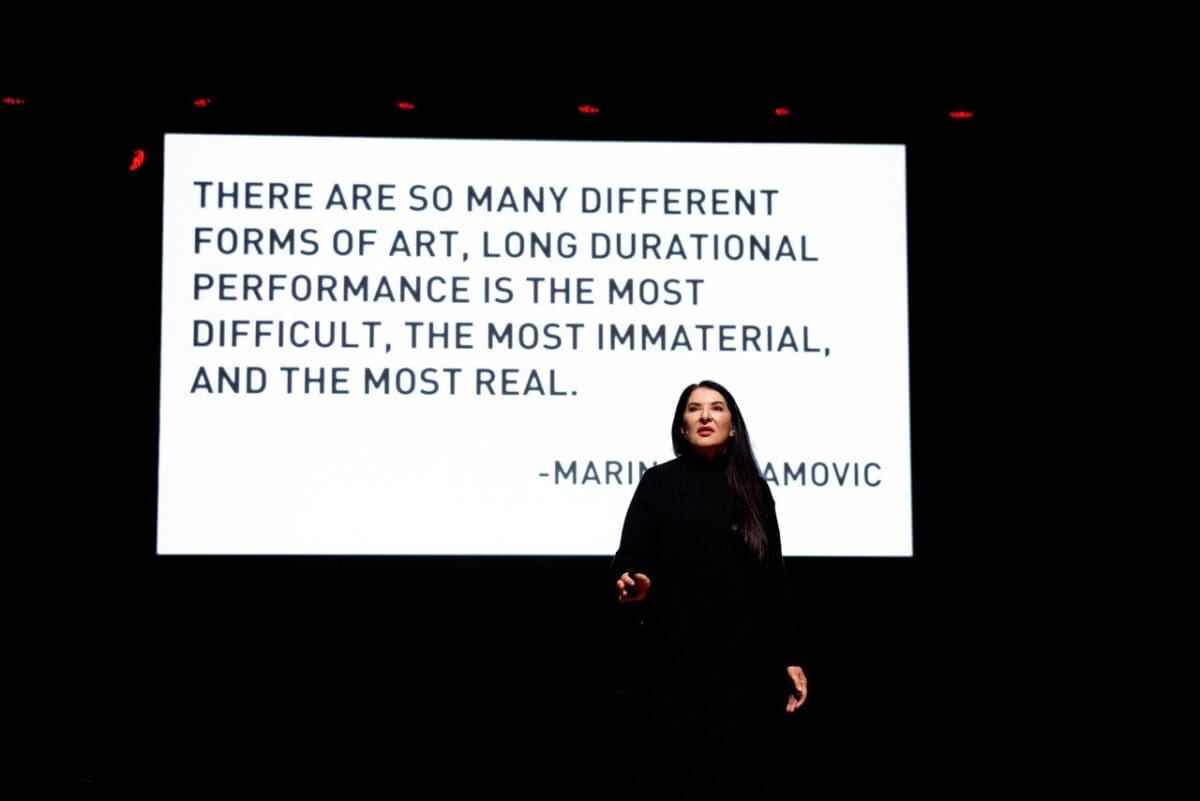
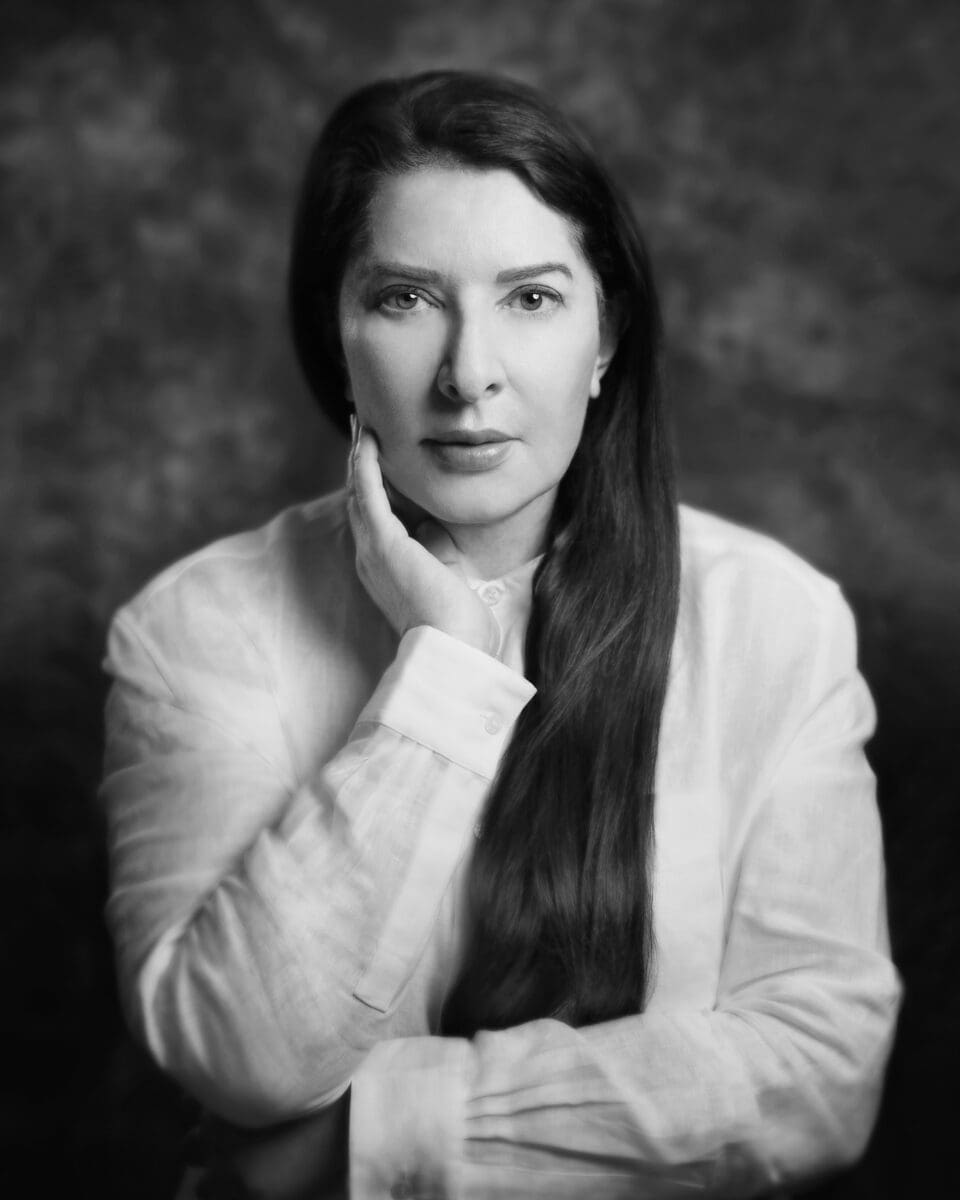
Marina Abramović has been one of the most important artists in my life—and I’m sure I’m not the only one. Since the 1970s, the Serbia-born artist has fearlessly given us performances that not only invented and defined performance art, but also pushed herself to the edge—giving us a glimpse of what it’s like to peer over.
One of her most known early performances—which we discuss—was the 1974 work Rhythm 0 where, at 28 years of age, she laid out 72 objects on a table including a razor, a rose and—famously—a gun. Audiences could use any object on her over six hours, with the artist taking “full responsibility” for their actions—the results were chilling. Throughout the late 70s and early 80s she collaborated with her artistic partner and lover Ulay (Uwe Laysiepen), in works that tested trust, pain and endurance. She achieved mainstream fame in 2010 for her MoMA retrospective in New York with the performance The Artist is Present. For three months she sat in a chair each day, and audiences lined up to sit in front of her, look at each other, and share a moment of silence. Many people were brought to tears.
In recent years she’s created the Marina Abramović Institute (MAI), a non-for-profit for performance art, as well as The Abramović Method, where the artist synthesizes 55 years of knowledge into workshops, participatory artworks and videos, with Abramović giving audiences various prompts to alter their attunement (and, most recently, she has a skin care line).
For the upcoming Adelaide Festival, Abramović and her team at the Institute have curated eight artists to deliver durational performances over the weekend from 1-4 March, with artists including Collective Absentia, Li Binyuan, Yingmei Duan, SJ Norman, Mike Parr, Indigo Perry, Melati Suryodarmo, and Christian Thompson.
While Abramović won’t be present for Adelaide Festival, she spoke with Art Guide editor-in-chief Tiarney Miekus about 60 years of performance art, wanting a one-way ticket into space, and answers a question about her most famous performance that no-one has asked before.
Tiarney Miekus:
I know for Adelaide Festival that you and your Institute have curated a selection of performances for the festival. Alongside those artists, there’s going to be a video on The Abramović Method, where you give certain prompts that centre slowness, or offer a different register of time and space. I’ve seen past versions, but are there any new prompts for this one?
Marina Abramović:
We’re [the Institute] always changing things. I’ve actually made one special version of [The Abramović Method] that can work to really tune you to see long durational work. Because to me it’s much more important that people see the work of the artists we choose than just listen to me. So, I’m doing a general welcome. After that I may say the names of artists, and then I’m talking about how [many] different forms of art there are in the world, and how performance is the most difficult one. We are talking long durational work.
I’m also giving a little introduction of me and Ulay [Abramović’s former artistic collaborator and lover] being in Australia in 1979 when we first visited and our relation to Aboriginal people, and being in this area. It was important to me to say that the Aboriginal people are not just the oldest race in Australia. They’re the oldest race on our planet. They should be treated as living treasures. In my autobiography, they [the public] took one sentence out of the context and really attacked me, that I am saying something against them. I’m not saying something against them, they’re the ones who really changed my entire attitude and viewpoint of life, and how I [approached] performance from there. The idea of long durational performance happened in Australia when living there [regional Australia] with the extreme temperatures that we can hardly move for days. And communicating with the different tribes—this is an experience that I never could forget.
After that I’m giving some exercises to the public to tune themselves to slow down to see long durational work, because long durational work is not like a fast forward event. There’s no beginning, there’s no end. Sometimes nothing happens. How do you deal with that, where is your mind? How can you tune in to that slow motion? The most important [aspect] is being in the present here and now. Because in your mind we are always in the past, which happened, or the future, which is going to happen—but we never talk about now.
TM: When you have that experience of beholding a tremendous work of art, it is a particular kind of contemplation or slowness, or this change of consciousness. But in The Abramović Method you make that contemplation explicit. Why did you choose to do that?
MA: Give me an example.
TM: Well, I was listening to some of The Abramović Method prompts online, like taking a sip from a glass of water as slowly as you can, or writing your name as slowly as you can. And I tried doing one of them and I thought to myself, “Is this meant to be similar to the type of experience that we get from art, that complete, utter presence.”
MA: You know, we [The Abramović Institute] do this as workshops, and I think it is much easier to do in the group because all the people are doing [it], so the energy is collective and then you can understand how things are changing. And it’s not exclusive because workshops are open for everybody. We have very young people, very old people, different groups. We have farmers, we have students. There was one older guy who came, he’s 65 and coming for the seven-day workshop, and he was from Germany. He was in a very bad mood all the time, but then the workshop starts with no talking and, for five days, no food. And then finally he gets in a better and better mood. When we finish, we give him back his phone and computer. Then we ask where he comes from and why was he in the workshop. He is saying, “My wife gave me a birthday present to be in the workshop!” So it was not his choice! But then he liked it so much that he came every year because he understood how actually that self-discipline, the simplicity, connects you with yourself.
Because we wake up in the morning, and first thing what do you do? You look at the watch, then you look at the messages, then you go to the computer—it’s all technology, technology, technology. You never actually sit in silence and just say, “Okay, where am I? Who am I? How do I feel? What is my breathing?” This is simple stuff but nobody teaches about this. So the institute for me is a place for people to connect with themselves. But it’s much more difficult if you look at the internet and do it that way, it’s much easier if you have a group of 15 people doing the same, then somehow the energy helps each other. So, my advice, don’t do anything yourself!
One more thing, when I was with John Kaldor in Sydney [for a 2015 performance], we had this big, big, big thing. It was incredible. It was something like 32,000 people came in 12 days. And we have this slow walking and all of this. And I remember one bank gave the money for this project. So, the president of the bank came and did the [prompts] with the group of people: slow walking, not talking, counting the rice. The next day he went to the bank and gave a free day to all the people working just to do the method. I thought, “It’s so great. Oh my god, I’m doing something positive here.”
TM: I remember that performance, but changing topic and going back to some even earlier works, I know you’ve probably answered a thousand questions on Rhythm 0…
MA: Yes [laughs]. Ask me something that I haven’t answered, c’mon!
TM: Okay, I’ll try. I’ve always wondered, if you were in the audience and you weren’t the artist, and you saw this young woman putting herself through that performance, would you participate in the work? And if so, how?
MA: You know, nobody asked me this question. Okay, you win! The most interesting thing about this work was that women will tell men what to do and they will never do anything, except one with a handkerchief would take my tears off my face. That’s the only gesture I had from one woman. That’s it. So, what would I do… I really think I would hug her. I think that woman needed so much love, just protection and love and to say, “Everything’s going to be okay, and you’re okay and you are loved.” Because I felt incredibly bothered and lonely and against the entire world, and I was ready to die for art. And I think that incredible need for love was missing.
TM: That’s beautiful. On those earlier works, I know you’ve reflected and said it was about confronting fear and finding freedom. But when you’re the person in your twenties doing that work, were you thinking of it that way at the time?
MA: No. At that time there’s so many things I had the urge to do, but I really didn’t understand why I’m doing [it], what it all is. You really need wisdom of old age to look back. And when I look back, I’m so surprised to see how everything looked logical. But what I was doing was not. I like to do one thing, and then completely something else. And I say, “Oh my god, this is crazy.” But then it was a straight line, but you can only see this later. So my advice to young artists is always when you have ideas, even the most crazy ones, just do them. Don’t wait, don’t think, “Oh my god, this is not my style.” There doesn’t exist such a thing. Just be free and express your ideas. And later on everything will make sense.
TM: That’s good advice. Can we talk about the works with Ulay, your collaborator and lover in the 1970s and 80s. In a lot of your works, you place trust in the audience. And it seems that as much as people talk about your work as overcoming pain and endurance, as being vulnerable, that’s only possible through a more underlying sense of trust in yourself and others. Have you thought about trust in relation to your work?
MA: Yes. It really was important. That work with Ulay, I could not do with without trusting him completely. And also to trust your ideas. That’s another special thing. When you have an idea, the idea I love is always the one I’m afraid of—not the one I like, because the one I like is too easy, and then you don’t change. I like to be afraid, and I have to be obsessed. Then there’s no way out. I have to do it. And then you have to trust your intuition. You know, the brain is very, very tricky. The mind always wanders everywhere, always asking too many questions, you always think you’re making mistakes or overthinking. But when you really go deep into intuition and just connect with the heart, then you never make [a] mistake because body wisdom is much stronger than mind.
TM: One other question about the works with Ulay. I know that when you two were separating, you both did a performance of walking the Great Wall of China, each starting at one end. After three months you met in the middle, and that was the end of the relationship. As someone who was once in a long relationship that was also creative, I imagined having to do that walk—I probably would have sobbed the whole time! How hard was it to do that?
MA: It was a very hard moment in my life because when we actually meet and we separate, I was 40 years old and until that time, the last 12 years, I made all my work with him together under two names. As you know, when you split with somebody like that, emotionally, you [usually] still have work to go to. But I didn’t have work to go to. It was like completely abandoning everything: who am I now, if there is no work and there is no relationship? It was one of the most difficult moments in my life. And it took me so long to figure out that the audience would come into the work and replace him. When he came to The Artist Is Present, I invited him, but I never knew that he would sit there. This was a crazy moment because I never break rules [of the performance], but I actually broke the rules because I put my hand to touch his hand—he was not one of audience, he was all my life. He passed away four years ago.
TM: I know, I was sorry to hear. I’ve seen the footage of The Artist is Present, and you sitting across from Ulay—it’s really emotional.
MA: You know why it’s emotional? Because it’s truth. Because everybody can connect to that because everybody in life has been similar.
TM: On The Artist is Present, I’ve watched some of the performance and it’s startling to see the emotion on people’s faces, and the amount of people that cried when sitting in front of you—how being seen by another person really triggers something. Did you think people would have such a strong emotional reaction?
MA: No, I absolutely never could never predict the immensity of that piece. Especially as the curator said to me, “Oh, but the chair will be empty all the time because nobody has time to sit in front of you in America.” And it was never free. And it was emotionally so incredible and exhausting. Every single day, it was so painful to be so emotionless, and every day you think, “Oh my god, can I make it?” And that was an incredible kind of happiness when I stood up from the chair. That is the moment when I actually say, “I have to make my legacy and I have to make my institute dedicated to long durational art.” Because this was three months [performing The Artist is Present] and I knew that I was changed, and I was different. It could not happen in three or five days. This is why now we are presenting eight artists for Adelaide Festival and they’re all doing long durational work and showing very different aspects of work.
TM: When you’re looking at durational works from these eight artists, what qualities does the work need to interest you?
MA: The person has to have charisma. The idea is important of course, but sometimes it’s important to just stand in a space for 15 minutes and look at the public. You see immediately, charisma or not. You see how they hold the space. How that minimality of silence and being still affects other people. You have to have that. You can learn lots about technique and endurance—but charisma you can’t.
TM: You obviously have that charisma. Is that something you always knew you had?
MA: [Laughs] I don’t know, I only just do this for 55 years.
TM: Well, myself and many others look up to you and admire you. It has to do with your art, of course, but it also seems like you live so singularly and uncompromisingly. Do you feel like you’ve led an uncompromising life?
MA: I really do because I never compromise with any kind of art market. I’ve never done anything that people want me to do. I always do things that I want to do. I’ve never had any kind of normality in my life. You know, I’m not great marriage material. I didn’t want children. I just make art. So, it’s kind of straightforward, my life [laughs]. And I’m happy with this. If I had to do it all over again, I would do it exactly the same.
TM: In your life you’ve defined what performance art is, and over that time it’s become legitimised in art institutions everywhere. Has this changed your relationship to it?
MA: Absolutely not. I spent 55 performance years putting performance in mainstream art. When I started, it was not even close to mainstream. The video and photography became mainstream, but not performance. They were treating us horribly, and it was always bad criticism, and nobody even considered it any form of art. So, it took a long, long time to understand how incredible and important performance is, because it’s a living form of art, it’s time-based art, it’s a transformative form of art. All of this, when you see something good, it’s emotional, you can understand why it’s important. Now the young artists are exploring this. And it’s wonderful to see everywhere. It doesn’t change anything. Just makes me smile.
TM: In a couple of years you’ll be turning 80, and I’ve read that you did celebrations for your 50th, 60th and 70th. What are you thinking for your 80th birthday?
MA: Oh my god, it’s in three years! I have to start thinking. I want to do something unexpected. It’s like, “80 years, everybody thinks you are old.” So maybe I have to do something energetically different. You know, I asked [Richard] Branson to give me a one-way ticket to space without return, but he refused.
TM: As a kind of final artwork?
MA: Yes, I would like to go out to space. Definitely. Can you imagine, at least you understand a little bit on what it’s all about. What are black holes, what are the other galaxies? And you have to die anyway, so why not in space?
While Abramović won’t be present at Adelaide Festival, the artist, alongside her team at the Marina Abramović Institute have curated eight artists to perform over the opening weekend from 1-4 March, including, Collective Absentia, Li Binyuan, Yingmei Duan, SJ Norman, Mike Parr, Indigo Perry, Melati Suryodarmo and Christian Thompson. Times and tickets are available here.
Marina Abramović Institute: Takeover
Adelaide Festival
1-4 March
